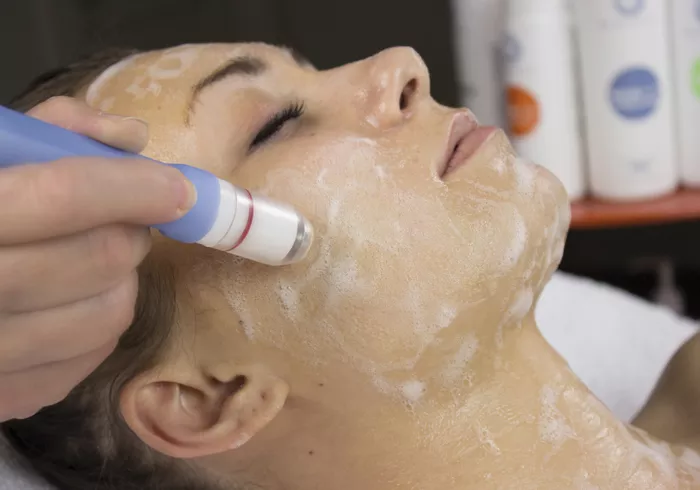Microdermabrasion is a popular cosmetic procedure that is used to improve the appearance of the skin. It involves the use of a specialized device that exfoliates the outermost layer of the skin, revealing smoother, brighter, and more youthful-looking skin underneath. However, many people are curious about how many layers of skin does microdermabrasion remove, and whether it is safe and effective. In this article, we will explore the science behind microdermabrasion, how it works, and how many layers of skin it can remove.
What is Microdermabrasion?
Microdermabrasion is a non-invasive cosmetic procedure that is designed to exfoliate the outermost layer of the skin. It involves the use of a specialized device that uses fine crystals or a diamond-tipped wand to remove dead skin cells and other debris from the surface of the skin.
The procedure can be performed on the face, neck, chest, hands, and other areas of the body, and is often used to treat a variety of skin concerns, including fine lines and wrinkles, acne scars, hyperpigmentation, and uneven skin tone.
How Does Microdermabrasion Work?
Microdermabrasion works by using a specialized device to exfoliate the outermost layer of the skin. This process removes dead skin cells, dirt, and other debris from the surface of the skin, revealing smoother, brighter, and more youthful-looking skin underneath.
The device used for microdermabrasion can vary depending on the type of treatment and the desired results. Some devices use fine crystals, such as aluminum oxide or sodium bicarbonate, to exfoliate the skin, while others use a diamond-tipped wand to gently abrade the surface of the skin.
Regardless of the type of device used, the process of microdermabrasion is generally the same. The device is moved across the skin in a series of passes, exfoliating the outermost layer of the skin and stimulating the production of collagen and elastin.
How Many Layers of Skin Does Microdermabrasion Remove?
Microdermabrasion is designed to remove the outermost layer of the skin, which is known as the stratum corneum. This layer of the skin is composed of dead skin cells and other debris, and is responsible for protecting the skin from environmental damage.
While microdermabrasion is designed to remove the stratum corneum, it is important to note that the depth of the treatment can vary depending on the type of device used and the intensity of the treatment.
In general, microdermabrasion is considered a superficial treatment that only affects the outermost layer of the skin. This means that it typically removes between 10-15 microns of skin, which is roughly equivalent to the thickness of a piece of paper.
However, it is important to note that the depth of the treatment can vary depending on a number of factors, including the type of device used, the intensity of the treatment, and the skill and experience of the practitioner. In some cases, deeper layers of the skin may be affected, which can result in more significant results but also carries a higher risk of side effects.
Is Microdermabrasion Safe and Effective?
Microdermabrasion is generally considered a safe and effective cosmetic procedure when performed by a qualified and experienced practitioner. It is a non-invasive treatment that does not require any anesthesia or downtime, and can be performed in as little as 30 minutes.
The procedure is generally well-tolerated by most patients, although some may experience mild redness, swelling, or sensitivity following the treatment. These side effects typically resolve within a few hours to a day after the procedure.
In terms of effectiveness, microdermabrasion can be an effective treatment for a variety of skin concerns, including fine lines and wrinkles, acne scars, hyperpigmentation, and uneven skin tone. While the results of microdermabrasion are generally temporary, with most patients requiring multiple treatments to achieve optimal results, it can be a safe and effective way to improve the appearance of the skin.
Conclusion
Microdermabrasion is a popular cosmetic procedure that is designed to exfoliate the outermost layer of the skin, revealing smoother, brighter, and more youthful-looking skin underneath. While the procedure is generally considered safe and effective, it is important to note that the depth of the treatment can vary depending on a number of factors, including the type of device used and the intensity of the treatment. As such, it is important to work with a qualified and experienced practitioner to ensure that the treatment is performed safely and effectively.

